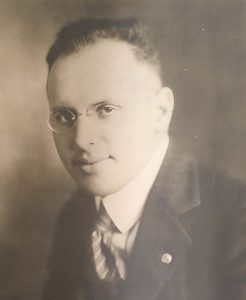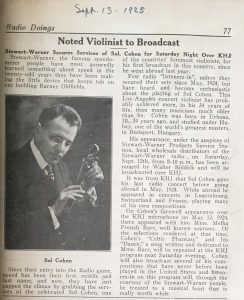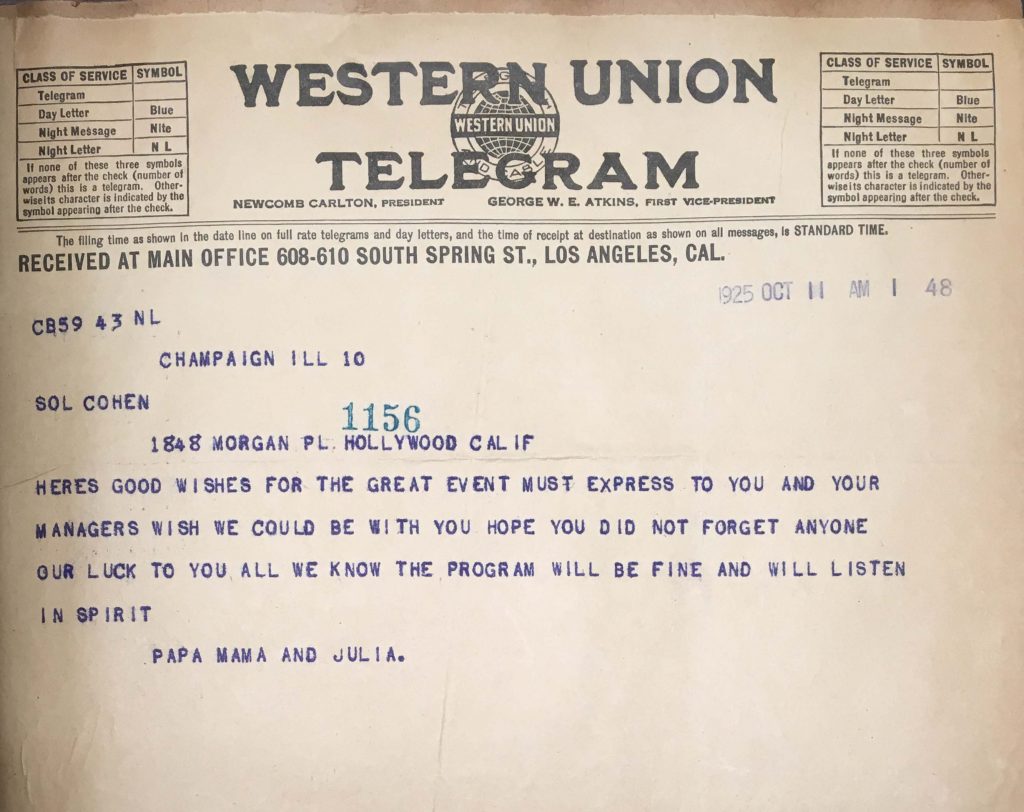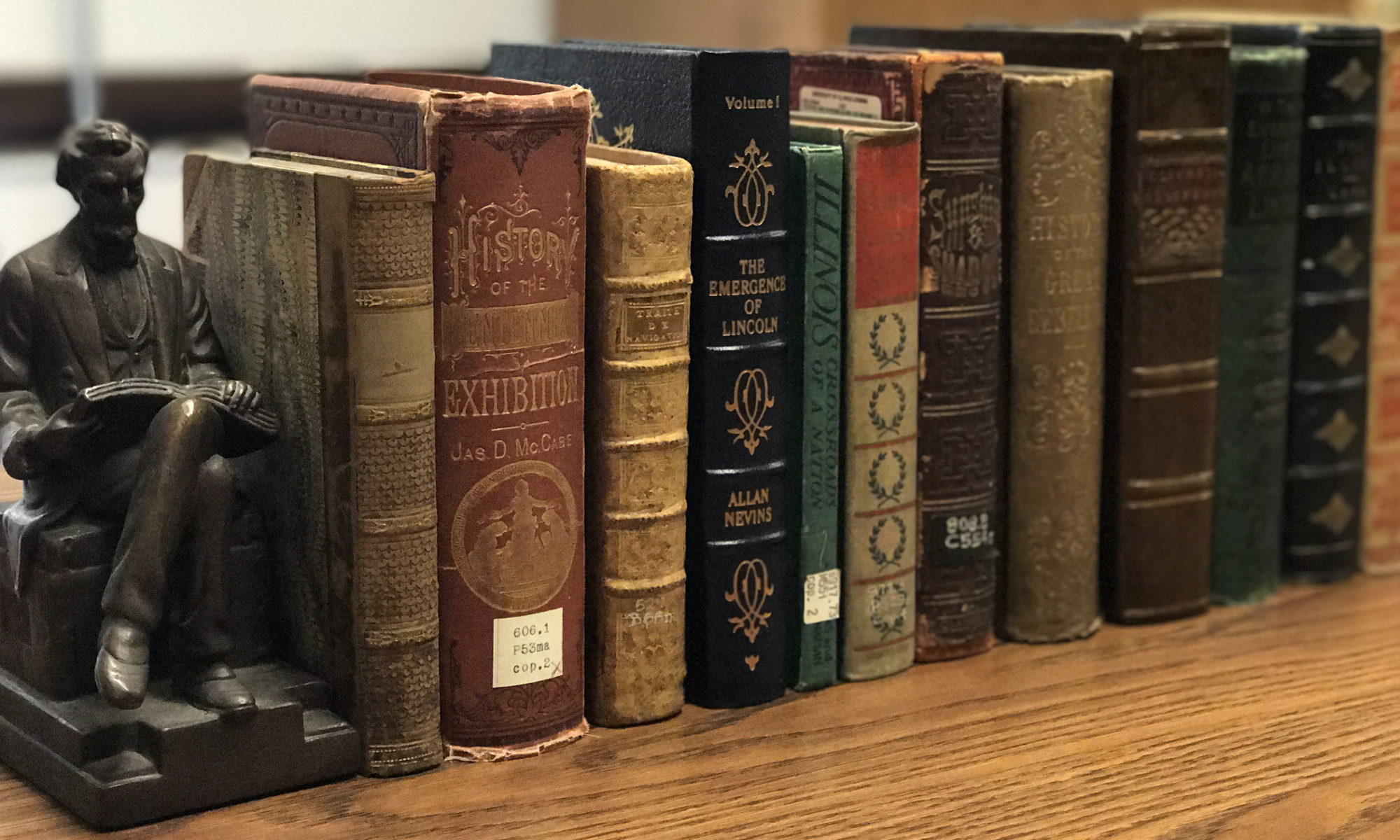 Sol Cohen was a violinist, composer, conductor, and educator from Urbana, Illinois, who was well known and regarded in the music world, especially in Los Angeles throughout the 1920s. Cohen was born in Urbana on January 11, 1891, to prominent cigar manufacturer Nathaniel H. Cohen and Addie Bernstein Cohen. He studied under French violinist Emile Sauret in Chicago through the early 1900s before traveling to Europe in 1908 to study in Prague, Budapest, and Paris. He wrote of his experiences in his memoir, Years of Pilgrimage: Memoirs of an American Musician, saying, “I left Europe with a very fair technical equipment, a large repertoire, and a mind stored with oceans of excellent music and the stuff of the continental concert halls.”
Sol Cohen was a violinist, composer, conductor, and educator from Urbana, Illinois, who was well known and regarded in the music world, especially in Los Angeles throughout the 1920s. Cohen was born in Urbana on January 11, 1891, to prominent cigar manufacturer Nathaniel H. Cohen and Addie Bernstein Cohen. He studied under French violinist Emile Sauret in Chicago through the early 1900s before traveling to Europe in 1908 to study in Prague, Budapest, and Paris. He wrote of his experiences in his memoir, Years of Pilgrimage: Memoirs of an American Musician, saying, “I left Europe with a very fair technical equipment, a large repertoire, and a mind stored with oceans of excellent music and the stuff of the continental concert halls.”
In the fall of 1911 Cohen made his Chicago debut at the Fine Arts Music Hall, and the following year he auditioned for the Cincinnati Symphony Orchestra and earned a position in the first violin section and the orchestra’s String Quartet. After his two-year contract, Cohen took a position as a violin teacher for the Peoria Musical College.
In 1917, with the conflict of World War I growing, Cohen decided to enlist. He went all the way to Texas, where his brother was serving as a captain of Company M in the 130th Infantry, to enlist in the army since his poor eyesight and a slightly wounded hand had previously kept him from joining. When the Major he approached with his request to join learned that Cohen had paid his own way all the way down from Urbana to enlist, he immediately passed him on to the recruiting station with his compliments. When Cohen was left alone in the recruiting station’s exam room before his physical evaluation he was able to memorize the chart for the sight test, which he then passed without issue. With this success, he was quickly accepted as a new recruit and assigned to care for the unit’s horses.
 After the war, and after several more years of European travel, Cohen decided to go to California. There he was hired as the musical director for Grauman’s Rialto Theatre. At that time, orchestras were important features of every picture house in the city. Silent films were released with an accompanying cue-sheet with musical selections for the orchestra to play during the film. The cue-sheet was comprised of short musical excerpts chosen to appropriately accompany the emotions being shown on screen. Cohen frequently incorporated more original musical selections than those provided on the cue-sheet, and he soon left this position to pursue other more creative opportunities. Not long after, Cohen secured an audition with the conductor of the Los Angeles Philharmonic Orchestra, and he was placed among the first violins in 1922. Cohen went on to write scores for films, perform with the Hollywood Bowl Orchestra, compose and publish a number of songs, and perform live and for radio broadcasts.
After the war, and after several more years of European travel, Cohen decided to go to California. There he was hired as the musical director for Grauman’s Rialto Theatre. At that time, orchestras were important features of every picture house in the city. Silent films were released with an accompanying cue-sheet with musical selections for the orchestra to play during the film. The cue-sheet was comprised of short musical excerpts chosen to appropriately accompany the emotions being shown on screen. Cohen frequently incorporated more original musical selections than those provided on the cue-sheet, and he soon left this position to pursue other more creative opportunities. Not long after, Cohen secured an audition with the conductor of the Los Angeles Philharmonic Orchestra, and he was placed among the first violins in 1922. Cohen went on to write scores for films, perform with the Hollywood Bowl Orchestra, compose and publish a number of songs, and perform live and for radio broadcasts.
Throughout the rest of the decade, Cohen gained diverse experience, performing with a wide range of ensembles, clubs, and community groups. He describes this time in his life:
As the Twenties rolled on, I continued to pursue my usual life in the city, accepting any engagement that came along, meeting all manner of original characters, and teaching an increasing number of serious pupils. I suppose I was now a familiar figure in women’s club circles, in churches, in motion-picture studios, and in theater pits.

Cohen also became the Orchestra Director for Ruth St. Denis and Ted Shawn, two pioneers of American modern dance, in 1930, and the following year his ballet, “Angkor Vat,” was performed by Ruth St. Denis and the New York Philharmonic Orchestra.
In 1929 the Great Depression brought Cohen back to Urbana where he once again took on pupils. He worked for a period of time at Champaign High School, and then through the 1940s and 1950s he took positions at schools all across the country, including in North Carolina, Massachusetts, Connecticut, and California. In 1961 he served at the music director at Crystal Lake Camp in Hughesville, Pennsylvania, and continued this post for twenty seasons.
In the early 1960s, Cohen returned to Urbana to live with his brother where he continued to privately teach pupils throughout the Champaign-Urbana area. Cohen died on September 29, 1988 in Champaign, Illinois.
The Sol B. Cohen Papers, 1870-1988 (MS 547) contain the personal and professional papers, correspondence, photographs, music compositions, artifacts, and diaries of Sol Cohen throughout his life and career. The collection contains a substantial number of letters between Cohen and correspondents all over the world whom he met through his travels and varied positions.
To learn more about Cohen’s life and career you can also see of his memoir, Years of Pilgrimage: Memoirs of an American Musician (Call number: 780.923 C66C1) in the IHLC’s holdings.
Other Resources
“Cohen, Sol B.” Who’s Who in the Midwest: A Biographical Dictionary of Noteworthy Men and Women of the Central and Midwestern States, 6th ed. Chicago: Marquis Who’s Who, 1958.
Who’s Who Today in the Musical World: A Biographical and Pictorial Record of Musicians of Today. New York: Birdsall, 1938.

Thank you for this site, and I also appreciated the comments! I’ve come across a few of Mr. Cohen’s compositions for oboe and like them very much, so it was wonderful to learn about him. I also appreciated some other info I found on Milburn E. Carey, an oboist and educator to whom the pieces were dedicated. I’m glad he had an ‘oboe muse’!
Sol Cohen taught us music appreciation at Roosevelt High School in Stamford Connecticut in the years that I attended (1962 — 66).He was a familiar and beloved presence on campus — an elderly, genial man, short, bespectacled, and passionate about music. He entranced us barbarians by playing violin — the theme from Moulin Rouge and other chestnuts. He wafted around campus on Saturday afternoons, listening to opera or a symphony on his transistor radio.
Thanks for your question! It looks like there are some diaries from the early 1960s in the collection (folders 577-580) that might provide some clues to this. We will be in touch over email.
I’m trying to find out if this is the same Sol B. Cohen who was a music teacher in a small private school in Connecticut from 1961-1964.
Sol was a familiar concert-goer during my years at U of I in the early 80’s. He was still playing, at 90. Courtly, affable and nostalgic, conversations with him were delightful, if difficult because of advance deafness and his antiquated, but not incorrect, manner of speaking. You were, literally, talking to someone from another era.
He never spoke directly of being gay, he used to say “Friends of Debussy” in homage of meeting Debussy at a soirée as a young man.
He had an enormous collection of very early 78 records that were his brother’s which included the earliest recordings of opera: Patti, Jeritza, Tetrazini, Destinn, etc. Also, in this collection were multiple metal discs that were Improvisational recordings made regularly with his brother; cut at a local radio station, I believe. The few I heard, were charming and free-flowing in an Impressionistic/Ethelbert Nevin/MacDowell days-gone-by manner.
He lived in a house (now gone) practically untouched since his childhood. Gaslight fixtures, pocket doors, stain-glass windows and chairs and sofas all losing their springs. He loved maple syrup and kept a gallon of it on the kitchen floor at all times.
He managed to reconcile Judaic and Christian Science thinking into his philosophy which may have contributed to his long life.
Quite a remarkable, gifted fellow that instilled in me a lifelong respect for very elderly people.
Really interesting–Thanks!